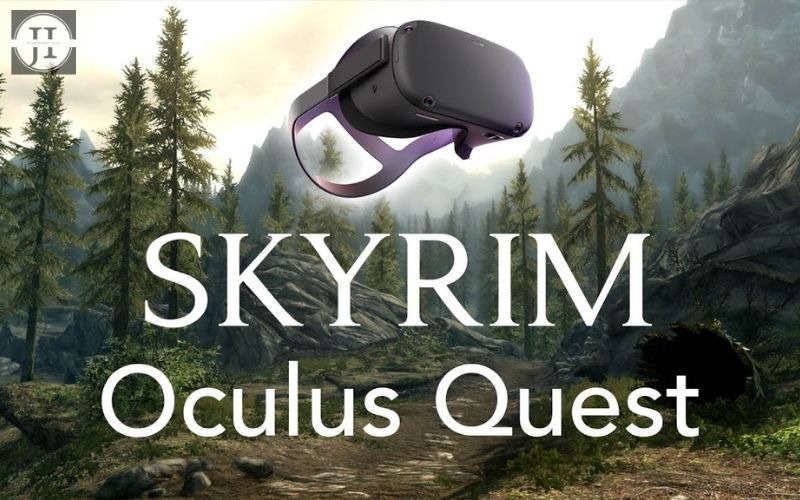In today’s rapidly evolving technological landscape, augmented reality (AR) and virtual reality (VR) stand out as two transformative innovations reshaping how we interact with the digital world. While both technologies offer immersive experiences, they cater to different needs and applications. This comprehensive guide aims to clarify the distinctions between AR and VR, exploring their definitions, key features, and real-world applications. From enhancing everyday experiences through AR to creating entirely new virtual environments with VR, understanding these technologies is crucial for businesses and consumers alike. Join us as we delve into the fundamental differences, explore their unique use cases across various industries, and uncover the future trends that are set to define the next wave of immersive technology. Whether you’re a tech enthusiast or a professional seeking insights, this guide will equip you with the knowledge to navigate the exciting realms of AR and VR.
Understanding Augmented Reality: Definition and Key Features
Augmented Reality (AR) is a technology that superimposes digital information, such as images, sounds, and other data, onto the real-world environment. This interaction enhances the user’s perception and experience of their surroundings by layering virtual elements. Unlike Virtual Reality (VR), which immerses users in a fully synthetic environment, AR maintains the real-world backdrop while integrating digital components seamlessly.
Key features of Augmented Reality include:
- Interactivity: Users can interact with both real and virtual elements simultaneously, allowing for a dynamic experience.
- Real-time Integration: AR applications operate in real-time, analyzing and responding to input from the user’s environment instantly.
- 3D Visualization: Digital objects can be presented in three dimensions, enhancing the sense of depth and realism.
- Contextual Information: AR can provide contextual data that enriches the understanding of the physical world, such as directions, product details, or historical facts.
- Accessibility: Typically accessible via smartphones, tablets, and AR glasses, making it a flexible tool for users across various settings.
This unique blend of real and virtual experiences highlights the significance of augmented vs virtual reality as a crucial area of exploration in technology today.
Exploring Virtual Reality: Definition and Key Features
Virtual Reality (VR) is an immersive technology that enables users to experience a computer-generated environment as if they were physically present within it. By using specialized hardware, such as VR headsets and motion controllers, VR creates an interactive, three-dimensional experience that can stimulate sight, sound, and in some cases, touch.
Key features of Virtual Reality include:
- Immersion: VR provides a sense of presence, allowing users to feel as though they are truly inside the virtual environment. This is achieved through high-definition visual displays and spatial audio.
- Interactivity: Users can interact with elements in the virtual space using handheld controllers or gesture tracking, enhancing engagement.
- Realism: Advanced graphics and simulations contribute to a highly realistic experience, often blurring the lines between the virtual and real worlds.
- 360-degree environments: VR allows users to look around and explore a virtual space from all angles, providing a comprehensive view of the surroundings.
Overall, the definition and features of Virtual Reality set it apart from its counterpart in the augmented vs virtual reality debate, focusing on complete immersion in a digitally crafted environment.
Key Differences Between Augmented vs Virtual Reality Explained
When analyzing Augmented vs Virtual Reality, it’s essential to recognize how each technology alters our perception of the world around us. Here are the key distinctions:
Understanding these differences is vital for businesses and developers to make informed choices about which technology to implement based on their specific use cases. The evolving landscape of Augmented vs Virtual Reality signifies a growing need for clarity in application and development strategies.
Applications of Augmented Reality in Real-World Scenarios
Augmented Reality (AR) has rapidly become a transformative technology across various sectors. By overlaying digital information onto the physical world, AR offers a unique way to enhance user interactions and experiences. Here are some notable applications:
- Education: AR is revolutionizing learning environments. Through interactive simulations and visualizations, students can engage with complex subjects such as anatomy or physics more effectively.
- Retail: Many retail businesses are utilizing AR to enhance the shopping experience. Customers can use apps to visualize how furniture would look in their homes or try on clothes virtually before making a purchase.
- Healthcare: In the medical field, AR applications assist in surgery planning and education. Surgeons can overlay critical information directly onto their field of view, improving precision and safety.
- Manufacturing: AR is utilized in training and maintenance. Workers can access real-time instructions and support, increasing efficiency and reducing errors in complex manufacturing processes.
- Tourism: Tourists benefit from AR through enhanced experiences at historical sites. AR apps can provide information, historical recreations, or even guided tours, enriching the exploration of cultural landmarks.
The applications of augmented reality in real-world scenarios reveal its capacity to profoundly impact daily life and various industries. As we continue to explore the augmented vs virtual reality landscape, the potential for AR to reshape how we interact with the world remains expansive and exciting.
Exploring Virtual Reality Use Cases Across Industries
Virtual reality (VR) is making significant strides across various sectors, offering innovative solutions that enhance experiences, improve training, and streamline operations. Below are some of the prominent industries utilizing VR technology:
| Industry | Use Case |
|---|---|
| Gaming | Creating immersive gaming environments where players can interact in real-time within simulated worlds. |
| Healthcare | Used for surgical training, allowing medical professionals to practice complex procedures in a risk-free setting. |
| Education | VR classrooms provide interactive learning experiences, making difficult concepts more accessible and engaging. |
| Real Estate | Virtual property tours give potential buyers an immersive experience of homes without physical visits. |
| Manufacturing | Training simulations for employees on machinery and processes, increasing efficiency while reducing errors. |
| Military | Combat training simulations that replicate battle scenarios, enhancing preparedness and tactical decision-making. |
| Tourism | Virtual tours allow users to explore destinations from their homes, enticing them to visit in reality. |
These examples highlight the remarkable potential of VR, showcasing a unique intersection where augmented vs virtual reality technologies can lead to transformative advancements within industries. As VR continues to develop, we can expect even more engaging and practical applications.}
Future Trends in Augmented vs Virtual Reality Technology
The landscape of Augmented vs virtual reality is rapidly evolving, and several trends are shaping the future of these immersive technologies. As both sectors continue to grow, innovations and advancements are driving new applications and ways of interacting with digital content. Here are some noteworthy trends to watch:
| Trend | Description |
|---|---|
| Enhanced Interactivity | Future applications will allow for even more interactive experiences, merging physical and digital environments seamlessly. |
| Increased Use of AI | Artificial intelligence will play a crucial role in improving user experiences by personalizing content and automating tasks. |
| 5G Integration | The rollout of 5G networks will facilitate faster data transfer, significantly improving the performance of AR and VR applications, especially in areas like gaming and training. |
| Social VR Experiences | As VR becomes more social, collaborative virtual spaces will emerge, enabling users to interact and collaborate in real-time. |
| Wearable Technology | Wearable devices that support AR will continue to develop, enhancing real-world interactions and experiences. |
| Expanded Industry Use Cases | Industries such as healthcare, education, and real estate will increasingly adopt augmented vs virtual reality technologies for training, presentations, and patient care. |
As we look to the future, understanding these trends will be essential for businesses and individuals alike, ensuring they stay ahead in the rising tide of augmented vs virtual reality innovations. The adoption of these technologies promises not just to enhance entertainment but also to revolutionize a variety of sectors.
Frequently Asked Questions
What is the primary difference between augmented reality (AR) and virtual reality (VR)?
The primary difference lies in the user experience: AR enhances the real world by overlaying digital information, while VR immerses users in a completely virtual environment.
How does augmented reality integrate with the real world?
Augmented reality integrates with the real world by using devices like smartphones or AR glasses to superimpose digital elements onto the physical environment.
What are some common applications of virtual reality?
Common applications of virtual reality include gaming, training simulations, virtual tours, and therapeutic uses in mental health.
Can you provide examples of augmented reality in everyday use?
Examples of augmented reality in everyday use include navigation apps that overlay directions on real-world views and AR games like Pokémon GO that blend digital characters with real environments.
Which technology typically requires more specialized equipment, AR or VR?
Virtual reality typically requires more specialized equipment, such as VR headsets and motion controllers, whereas AR can often be accessed with smartphones or tablets.
How do AR and VR technologies impact education?
AR and VR technologies enhance education by enabling interactive learning experiences, virtual field trips, and immersive simulations that improve student engagement and understanding.
What are future trends for AR and VR technologies?
Future trends for AR and VR technologies include advancements in hardware, more widespread adoption in various sectors like healthcare and education, and improvements in user interactivity and experience design.












